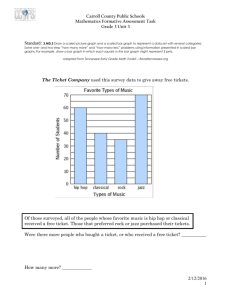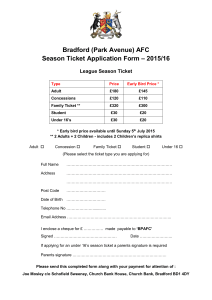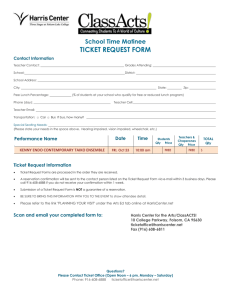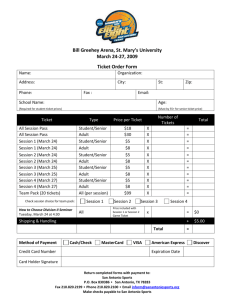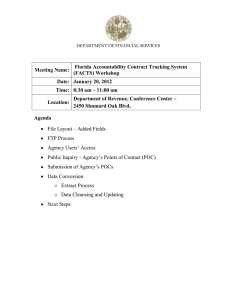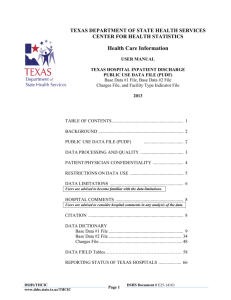Document Analysis
advertisement
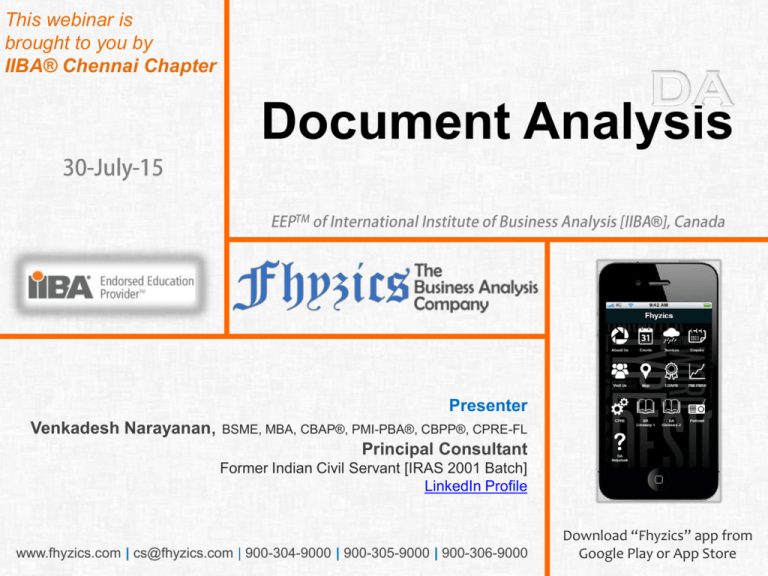
This webinar is brought to you by IIBA® Chennai Chapter Document Analysis ® Presenter Venkadesh Narayanan, BSME, MBA, CBAP®, PMI-PBA®, CBPP®, CPRE-FL Principal Consultant Former Indian Civil Servant [IRAS 2001 Batch] LinkedIn Profile www.fhyzics.com | cs@fhyzics.com | 900-304-9000 | 900-305-9000 | 900-306-9000 Download “Fhyzics” app from Google Play or App Store Thank You Note ® IIBA® Global Leadership Meet at Chennai ® Agenda • • • • • • • • • • • • • A Document Analysis Story Cost of Doing Business Analysis Document Analysis Technique Research Types What is Document Analysis? Sources of Document Analysis Stages of Document Analysis Types of Document Analysis Document Analysis Worksheets Case Study-1 Movie : Thani Oruvan Document Analysis : ABC Categorization The Purpose of Document Analysis Business Analysis Centre of Excellence • • • • • • • • • Organizational Process Asset Forms of Organizational Process Asset Case Study-2: Launch of New Airline Sample Air Ticket Document Analysis : Air Ticket Mind Map The Pros & Cons of Document Analysis Competencies of Conducting Document Analysis Q&A A Document Analysis Story On July 4, 1956, Betty placed her one-month-old son Peter in his baby carriage on the patio of her New York home. Courtesy : Document Analysis By Elizabeth Bauchner https://www.fbi.gov/about-us/history/famous-cases/the-weinberger-kidnapping Cost of Doing Business Analysis Business Analyst Compensation Stakeholder’s Compensation Execution Cost Opportunity Cost Document Analysis Technique The most important & most ignored technique in the field of Business Analysis Document Analysis may be credited as the one and only technique that a Business Analyst may use in all her projects each and every time Research Types • Research can be either primary or secondary. Primary research is new research, carried out to answer specific issues or questions. It can involve questionnaires, surveys or interviews with individuals or small groups. • Secondary research makes use of information previously researched for other purposes and publicly available. This is also known as 'desk research'. Secondary research includes published research reports in a library, surveys or the Internet. It can also include scientific reports produced by medical councils, universities or government, for example, the Royal College of Physicians, the British Heart Foundation and the Department of Health. What is Document Analysis? Document Analysis is a means to elicit requirements by studying available documentation on existing and comparable solutions and identifying relevant information. Document analysis may include analysis of business plans, market studies, contracts, requests for proposal, statements of work, memos, existing guidelines, procedures, training guides, competing product literature, published comparative product reviews, problem reports, customer suggestion logs, and existing system specifications, among others. What is Document Analysis? • Identifying and consulting all likely sources of requirements will result in improved requirements coverage, assuming the documentation is up to date. • Document analysis is used if the objective is to gather details of existing solutions, including business rules, entities, and attributes that need to be included in a new solution or need to be updated for the current solution. • This technique also applies in situations where the subject matter experts for the existing solutions are no longer with the organization, or are not going to be available throughout the duration of the elicitation process. Sources of Document Analysis Business plans Market studies Contracts Request for proposals Statements of work Memos Existing guidelines Policies Training guides Competing product literatures Published comparative product reviews Problem reports Customer suggestion logs Existing systems specifications Standard operating procedures Stages of Document Analysis Stages of Document Analysis Preparation • Evaluate which existing system and business documentation is relevant, available and appropriate for study. Document Review • Study the material and identify relevant business details. • Document business details as well as questions for follow-up with subject matter experts. Wrap-up • Review and confirm the selected details with subject matter experts. • Organize information into requirements format. • Obtain answers to follow-up questions. Types of Document Analysis Quantitative • Content Analysis Qualitative • Semiotics • Discourse analysis • Interpretative analysis • Conversation analysis • Grounded Theory Format Document Analysis Worksheets http://www.archives.gov/education/lessons/worksheets/ Case Study-1 Movie : Thani Oruvan • Police training manuals • National level IPS based movies • Film industry related documents • Terminologies used in film industry • Understanding the role of a Director • Character study Document Analysis : ABC Categorization 5% Defining Documents 15% Asserting Documents 80% Reference Documents The Purpose of Document Analysis To save stakeholders time To give confidence to the stakeholders To gain informal authority over stakeholders Business Analysis Centre of Excellence Business Analysis Related Standards Domain Related Standards Business Principles and Practices Regulatory Framework Process & Project Documentation Organization Vision, Mission, Goal and Strategy Template and Other Documents Organizational Process Asset All materials used by groups within an organization to define, tailor, implement, and maintain their processes. Define Tailor Implement Maintain Forms of Organizational Process Asset Physical Library Enterprise Content Management System Individual Ownership Case Study-2 : Launch of New Airline Sample Air Ticket Document Analysis : Air Ticket Document Type Document Nature Authenticity Issued By Printed Document Ticket (Travel Authorization) Credible Indigo Airlines Document Analysis : Air Ticket Passenger Information Passenger Name [First Name & Last Name] Alpha; First – 15; Last – 15 Passenger Gender Alpha; 5 Passenger Category [Child/Adult] Alpha; 5 Ticket Confirmation Status Alpha; 5 Passenger Class Alpha; 10 Airlines PNR Alphanumeric; 8 CRS PNR Alphanumeric; 8 Document Analysis : Air Ticket Passenger Information Ticket Number Alphanumeric; 8 Basis Alphanumeric; 8 Ticket Price Number; 10 Price Currency Alphanumeric; 5 Flight Number Alphanumeric; 8 Meal Preference Alpha; 10 Mobile Number Number; 15 Document Analysis : Air Ticket Travel Information Airline Name Alpha; 10 Mode of Travel Alpha; 10 Date of Journey in DD/MM/YYYY Format Number; 10 Source Location Alphanumeric; 15 Destination Location Alphanumeric; 15 Document Analysis : Air Ticket Travel Information Departure Time and Date Alphanumeric; 20 Arrival Time and Date Alphanumeric; 20 Departure Airport Alphanumeric; 50 Arrival Airport Alphanumeric; 50 Tour Code Alphanumeric; 15 PF Acct. Code Alphanumeric; 15 Mind Map Xmind iMindMap The Pros & Cons of Document Analysis Pros • Gains an extensive knowledge about the area of business analysis activity. • Save a lot of time of stakeholders • Presents the BA as a knowledgeable person • Helps the BA to drive the BA project Cons • Collecting the relevant documents is a challenge • BA should be a good reader to take advantage of this technique • Consumes relatively a lot of time Competencies for Conducting Document Analysis Learning Creative Thinking Attitude for Research Comprehension Modeling Systems Thinking Q&A 29/07/2015 V1.0 This webinar is brought to you by IIBA® Chennai Chapter Thank You You can download this presentation from our BLOG at http://bacourse.com/blog You can access this recorded presentation from IIBA® Chennai Chapter’s YouTube Channel www.fhyzics.com | cs@fhyzics.com | 900-304-9000 | 900-305-9000 | 900-306-9000
